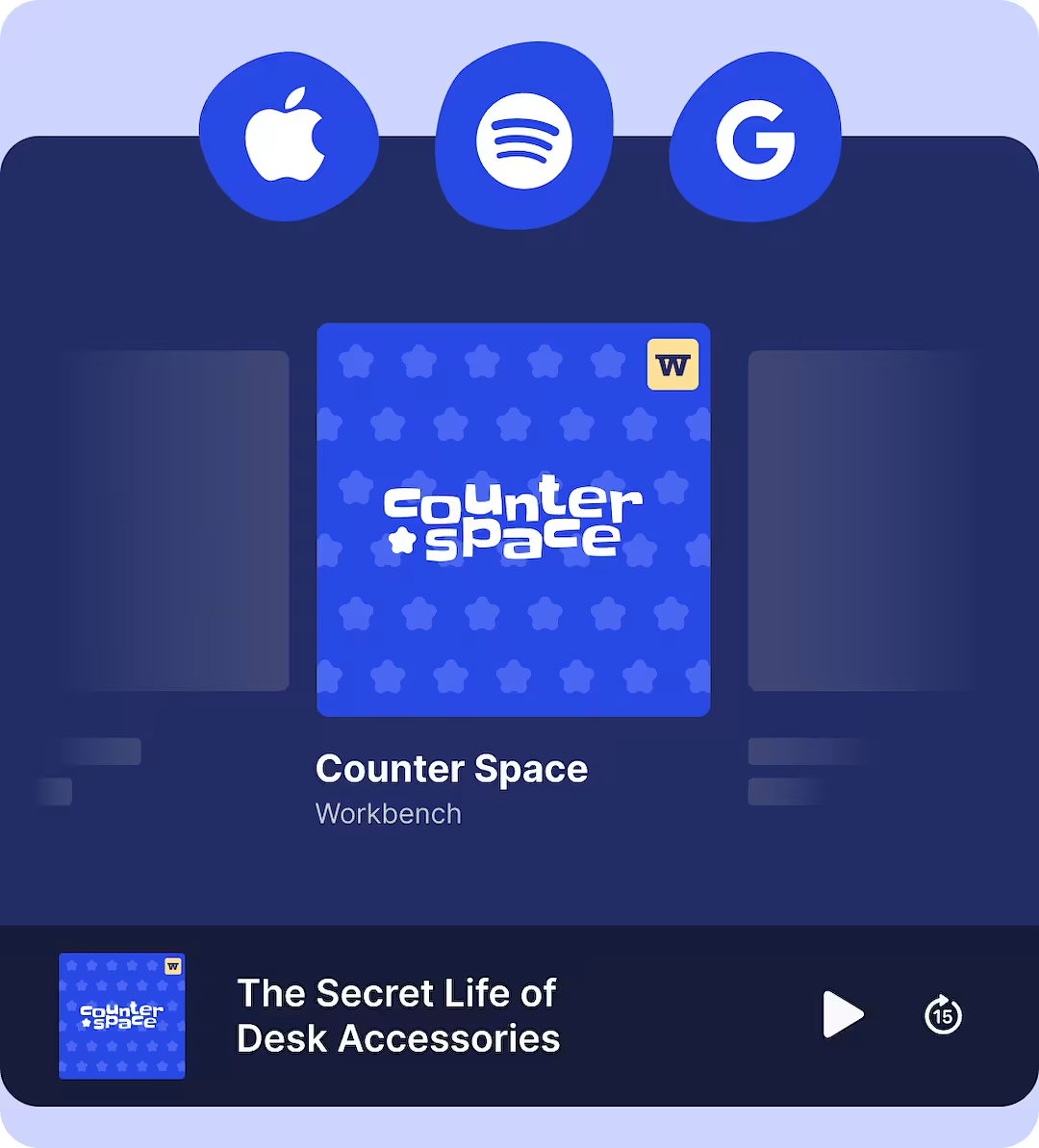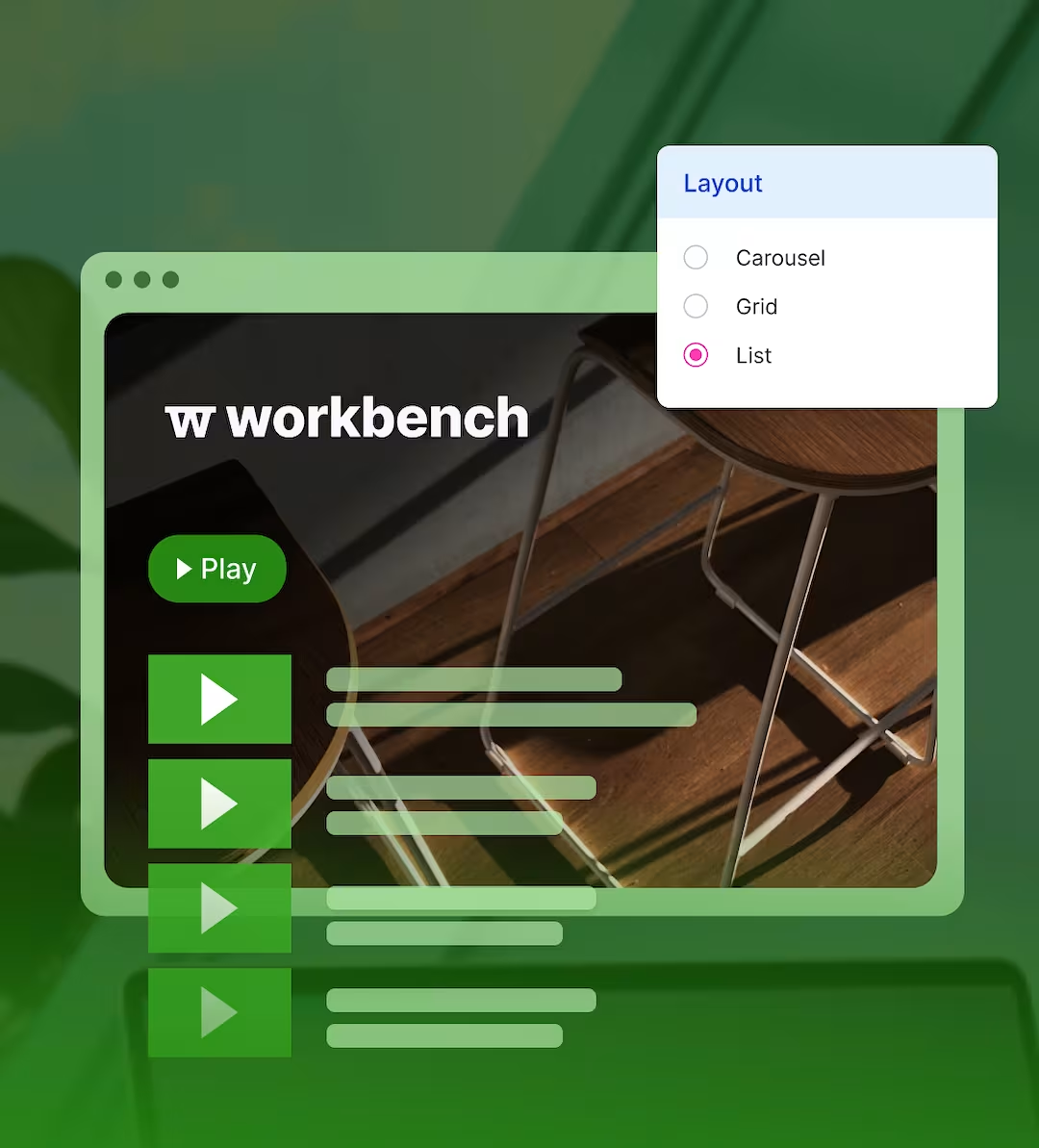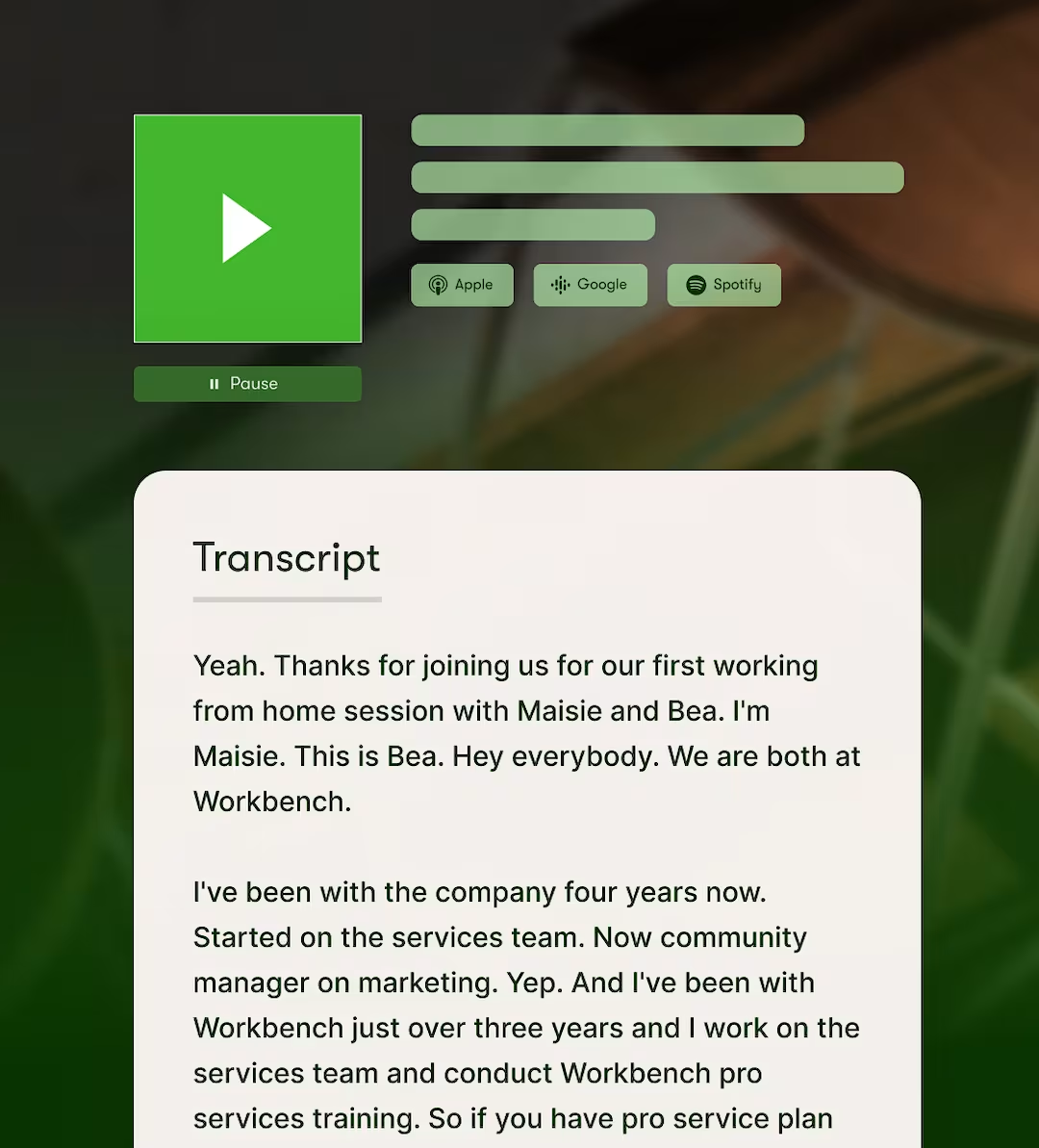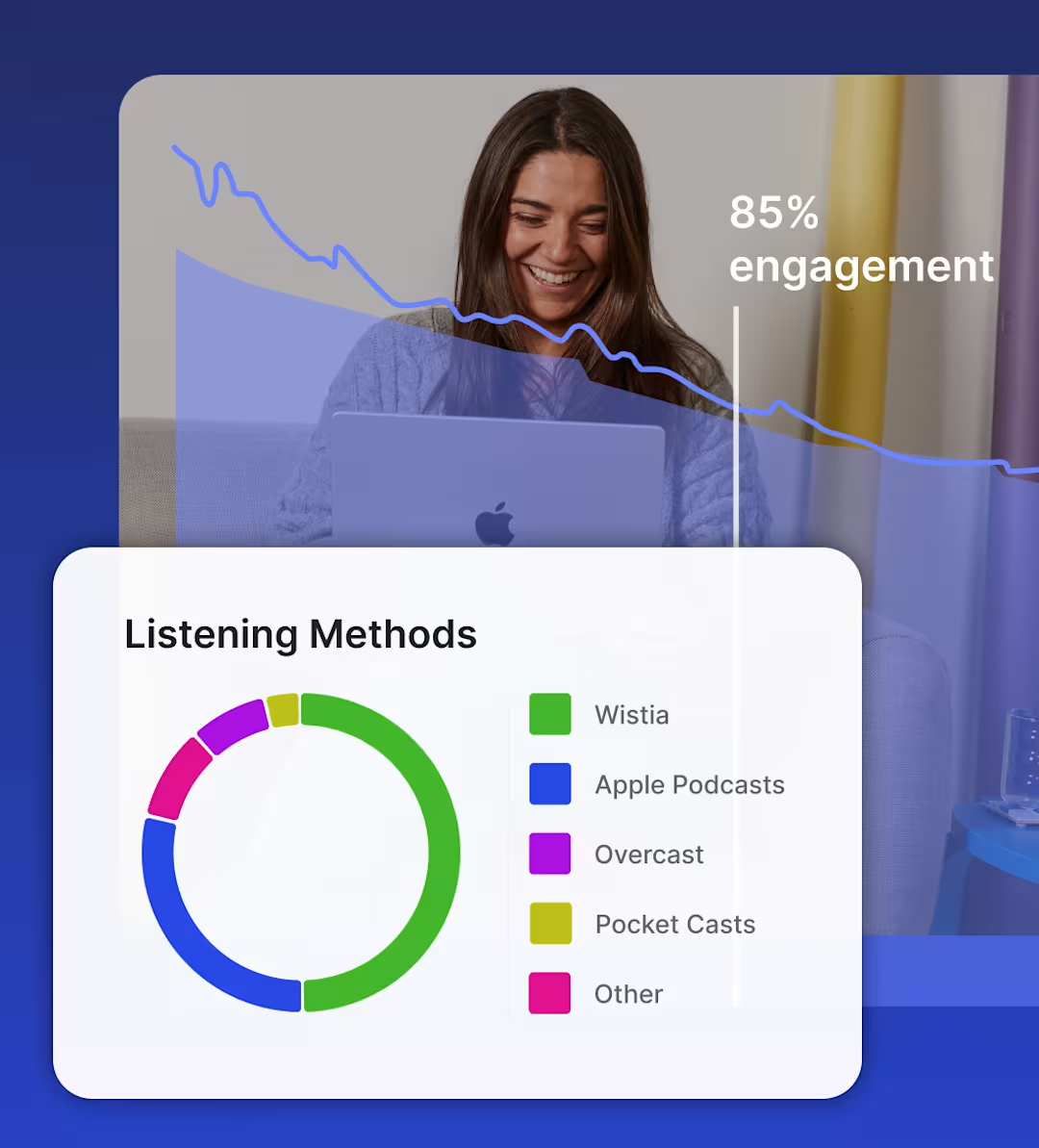Video podcast platform
A launchpad for your pod
Everything you need to get those podcast episodes packaged up, published, and performing for your business.
Trusted by over 375,000 customers
Hassle-free podcast hosting
We’ll help you get your episodes uploaded, organized, and out there.
Learn about our video hosting tools
Distribution
Upload your episode’s audio and we’ll distribute it to top directories like Apple and Spotify.
Management
Store, organize, find, and archive your episodes in a jiffy.
A beautiful way to listen
Make your podcast look as good as it sounds.
Customizable player
Choose colors, add your logo, and feature your episode’s artwork.

Podcast homepage
Create a slick home base for your pod in minutes. No design skills necessary.

Auto transcription
We’ll include transcripts with your show notes for episodes that are accessible and primed for SEO.

Video podcasts, too
Let your audience see you! Video makes your content more engaging and shareable than ever.

Like what you see?
Start a free trial
Analytics that measure up
Get all the data you need to track performance across every channel.
Show metrics
Get key info like total plays, hours played, and top-performing episodes. We’ll also pull Apple, Spotify, and Google Play data into one simple dashboard so you can see how your show performs on each platform.
Episode metrics
We’ll show you what percent of your audience played each episode. And with episode-specific engagement graphs and heatmaps, you can see exactly which parts people are listening to, replaying, and loving the most.
Video podcasting is just the beginning
We’ve got all the tools you need to squeeze more juice out of your videos.

Recording
Create super polished videos with just your laptop.
Management
Store, organize, find, and archive your videos in a jiffy.
Collaboration
We’ve made getting feedback simple and fun. Really!
Playback
We designed our player to be fast, customizable, and compatible with any browser or device.
Video galleries
Build an on-brand page for all your content. No coding required.
Lead generation
Turn your videos into marketing machines.
Webinars
Hosting webinars is now a piece of cake. Preferably red velvet.
Marketing integrations
Automatically send video data to your favorite marketing tools.
Frequently asked questions
Get all the As to your FAQs.
Am I able to only use audio when hosting my podcast on Wistia?
Of course! Wistia offers podcast hosting for both audio and video podcasts. Simply upload your podcast recording, and Wistia will distribute your show to every platform where you want to broadcast. Video podcasts are supported in Wistia Channels, and we’ll get your video podcast out to any platform that supports video content, like Apple Podcasts.
What file types are accepted in Wistia?
If you have an audio podcast, Wistia supports these types of audio files: MP3, WAV, AIF, AU, M4A, and OGG. For video podcasts, Wistia supports video recordings uploaded in MOV, MPG, AVI, FLV, F4V, MP4, M4V, ASF, WMV, VOB, MOD, 3GP, MKV, DIVX, XVID, WEBM, or MXF file formats.
Can my podcast be distributed to all podcast directories?
You betcha! Once you have your podcast feed configured and at least one episode published, you can use the RSS feed URL from Wistia to set up distribution to podcast directories like Apple Podcasts, Spotify, and Google Podcasts. If you have a video podcast, you’ll be right at home with Wistia Channels, and you’ll have the option to distribute your episodes to other platforms that support video podcasting too.
My podcast is hosted on another platform, so can I move all of my episodes over to Wistia?
Absolutely! If you have podcast content hosted on another platform, you can import all of your existing audio and video recordings to Wistia without losing any of your subscribers. All you need is your RSS feed URL.
Can I embed my podcast episode on my website?
With Wistia, you can embed audio and video podcasts on your own website with our customizable audio or video player. And with Wistia Channels, you can create a dedicated page or embedded playlist so that your audience can tune in to each episode as you publish them.